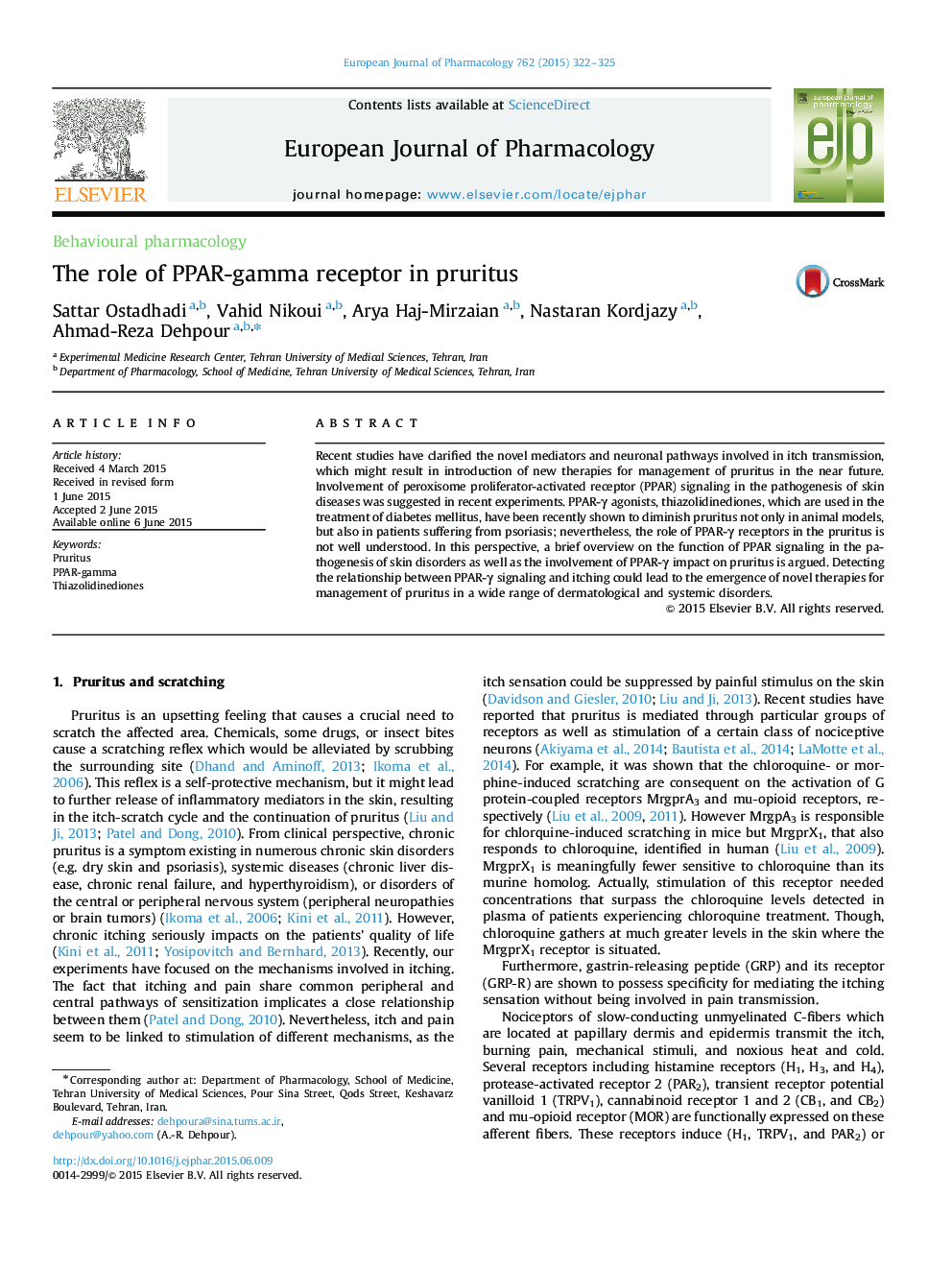| Article ID | Journal | Published Year | Pages | File Type |
|---|---|---|---|---|
| 5827193 | European Journal of Pharmacology | 2015 | 4 Pages |
Recent studies have clarified the novel mediators and neuronal pathways involved in itch transmission, which might result in introduction of new therapies for management of pruritus in the near future. Involvement of peroxisome proliferator-activated receptor (PPAR) signaling in the pathogenesis of skin diseases was suggested in recent experiments. PPAR-γ agonists, thiazolidinediones, which are used in the treatment of diabetes mellitus, have been recently shown to diminish pruritus not only in animal models, but also in patients suffering from psoriasis; nevertheless, the role of PPAR-γ receptors in the pruritus is not well understood. In this perspective, a brief overview on the function of PPAR signaling in the pathogenesis of skin disorders as well as the involvement of PPAR-γ impact on pruritus is argued. Detecting the relationship between PPAR-γ signaling and itching could lead to the emergence of novel therapies for management of pruritus in a wide range of dermatological and systemic disorders.
